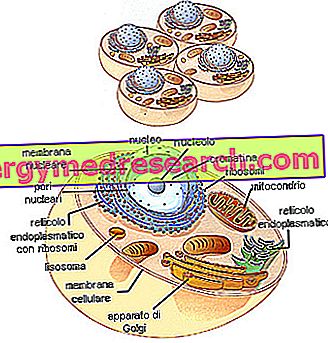This term indicates the continuous processes, both chemical and physical, to which the protoplasm is subject and which give rise to the continuous exchange of energy and substances between the external environment and the cell itself.
It stands out:
a) cellular anabolism, in which all the processes by which the cell is enriched with substances vital to it and stores complex chemical molecules fundamental for its evolution and for its trophism are included;
b) cellular catabolism, which means all the destructive processes that the previously stored chemical molecules face; destruction that leads to the formation of energy with consequent elimination of waste.
All these processes can be collected under a common denominator: cell turnover.
The intake of solid particles occurs by phagocytosis. This property was studied for the first time on the leukocytes of a mollusc from Haeckel, in 1862, and consists in the emission of pseudopods (extensions, due to extroflexions of the cell membrane) or of undulating membranes, so that the material to be incorporated is circumscribed by such prolongations and finally incorporated into the cytoplasm.
Based on the phagocytizing properties, the cells have been distinguished as macrophages and micro-cells: the former are able to assimilate complete bacterial cells, the micro-cells, on the other hand, only corpuscular parts or cell residues. Both types of phagocytizing cells are abundantly represented in the human body. The functions to which these elements are deputies are: defense against germs and pathogenic micro-organisms in general, elimination of atmospheric dust which through respiration reaches the pulmonary alveoli, elimination of debris from decomposing organs (as happens for example in the metamorphosis of some animals) and finally the absorption of inflammatory processes. The main mechanism by which the cell feeds occurs through the absorption of liquid particles. In this respect, the cell membrane plays a fundamental role. In fact, it behaves like a semipermeable membrane, like a filter, allowing the passage of certain substances and not others, even if with considerable chemical affinity. It has also been noted that the readiness to absorb the membrane varies according to the functional state in which it is found: for example, if the cell, in a given state, does not need lipids, while being able to absorb them, it will not introduce them, in how much your needs are fulfilled for the moment.

Click on the names of the various organelles to read the in-depth analysis
Image taken from www.progettogea.com
See also: basal metabolism
speed up the metabolism
Edited by: Lorenzo Boscariol



